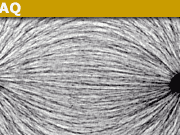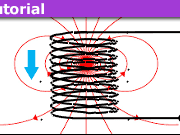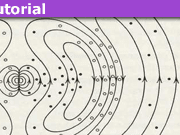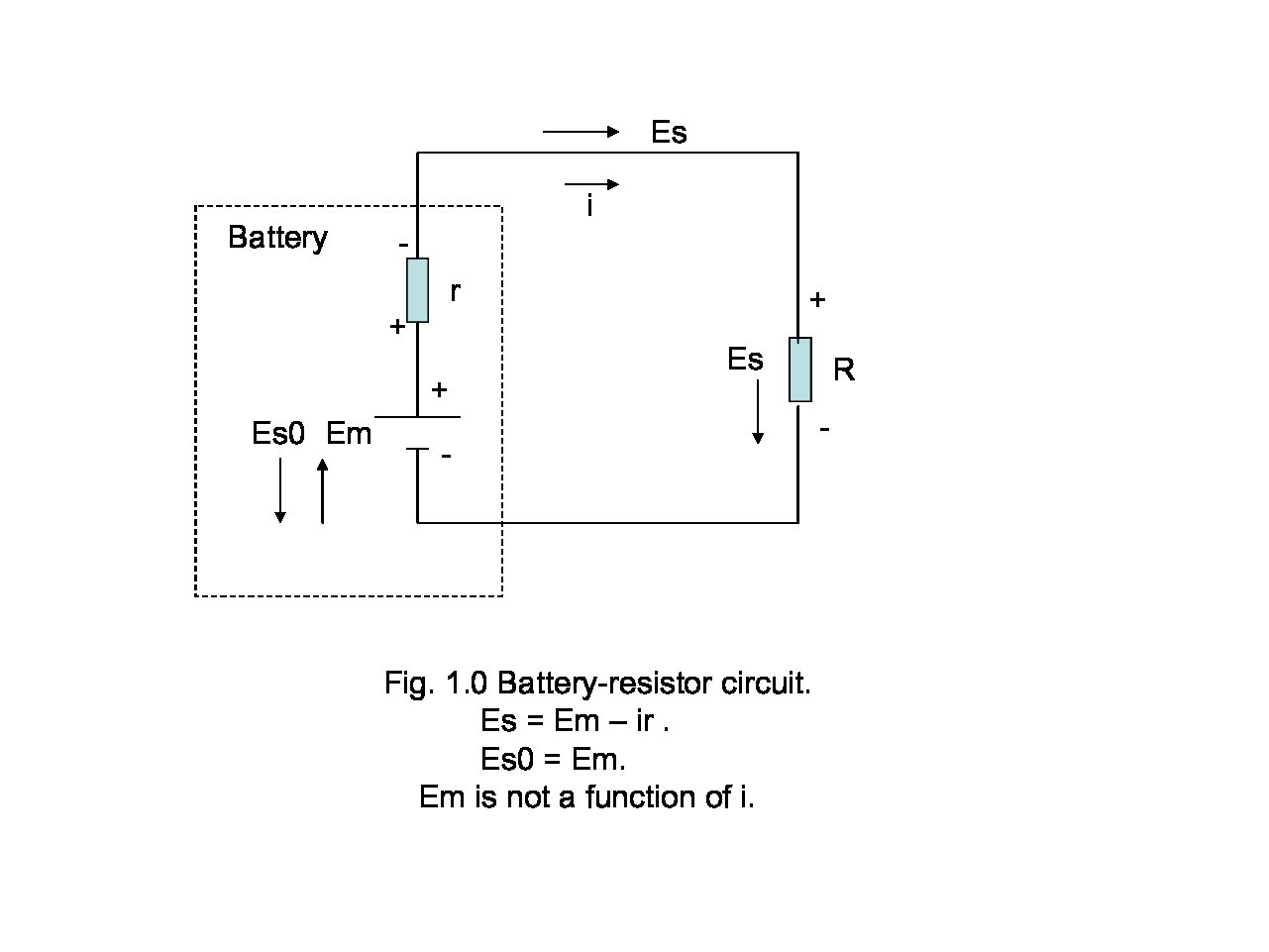Relativistic Treatment of the DC Conducting Straight Wire
Table of Contents
Introduction
The direct-current-conducting infinitely long wire is often discussed in the context of relativistic electrodynamics. It is of course a completely academic discussion since for the typical household currents the drift velocity of the electrons in the wire, making up the conduction current, is tiny (of the order ##\mathcal{O}(1\,\text{mm}/\text{s})##!). Nevertheless, it is unfortunately only quite confusingly discussed in the literature. So here is my attempt for a more consistent description using a naive classical model of metal as consisting of a continuum of effectively positive bound charges (consisting of atoms and the bound electrons making up the lattice forming the metal, in the following called “ions”) and negative freely moving conduction electrons, treated as a freely moving fluid subject to some friction when moving against the positive charged rigid background.
The confusion starts with the fact that usually it is not carefully discussed in which reference frame the wire is uncharged. It is not the rest frame of the wire (i.e., the rest frame of the ions) but the rest frame of the conduction electrons [1]. The qualitative argument is simple: We consider a straight wire with a constant current. In the rest frame of the conduction electrons, there is a current due to the moving positively charged background and a corresponding magnetic field. The charges within the positive background are however bound and can be considered not to move due to the electromagnetic field. Thus in this reference frame, the charge density vanishes everywhere within the wire as if there were no current at all since the freely movable conduction electrons are at rest, and there is thus no net force acting on them and thus in this reference frame, no charge separation occurs.
Since the charge density (times ##c##) and the current density form a four-vector, consequently in the rest frame of the wire (i.e., the rest frame of the ions) there must be a non-vanishing charge density within the wire due to the Lorentz-transformation properties of vector components. This is also easily explained dynamically: In this reference frame the conduction electrons move along the wire with constant velocity, and thus a magnetic field is present, which causes a radial force on the conduction electrons, which consequently arrange such that an electric field is built up which exactly compensates this magnetic force. This is, of course, nothing else than the “self-induced” Hall effect.
This is taken into account automatically when the correct relativistic version of Ohm’s Law is considered, which is sometimes approximated with the simple non-relativistic form, consequently leading to non-covariant approximations of the fields.
$$\newcommand{\diag}{\mathrm{diag}} \newcommand{\vvv}[3]{\begin{pmatrix} #1\\[0.5mm]#2\\[0.5mm]#3 \end{pmatrix}} \newcommand{\vv}[2]{\begin{pmatrix} #1 \\[0.5mm] #2 \end{pmatrix}}$$
Analytical treatment
As a usual material for wires, we can consider copper, which in the static case has permittivity and permeability very close to 1 (in the here used Heavyside-Lorentz units). Thus we make the simplifying assumption that, using the usual electromagnetic field components wrt. an arbitrary inertial reference frame,
$$\begin{equation}
\label{1}
\vec{E}=\vec{D}, \quad \vec{B}=\vec{H}.
\end{equation}$$
Now we use our above defined very simplified classical model of a metal to describe the wire, which we consider to be a very long cylinder along the ##3##”=axis of an inertial reference frame. It consists of a positively charged continuum of ions with only bound charges of proper density ##n_+(x)##, which denotes the number-density of positively charged ions and quasi-freely movable conduction electrons with proper density ##n_-(x)##, where ##x=(c t,\vec{x})## is the space-time four-vector. Further let ##u_+(x)## and ##u_-(x)## be the four-velocity fields of the positive ions and negative conduction electrons respectively, which are normalized such that ##u_{\pm} \cdot u_{\pm}=1##, with the Minkowski-metric components ##\eta_{\mu \nu}=\eta^{\mu \nu}=\diag(1,-1,-1,-1)##. In our arbitrary frame the four-current density field thus reads
$$\begin{equation}
\label{2}
j=e c (n_+ u_+-n_- u_-).
\end{equation}$$
In the following we assume that we can find a solution of the magnetostatic Maxwell equations thus that in the rest-frame of the wire (i.e., the restframe of the positive ions) the conduction electrons move with a constant velocity ##\vec{v}=c \vec{\beta} \vec{e}_3=c \vec{u}_-/u_-^0=\text{const}## along the wire.
As we argued above, we assume that the charge density in the rest frame of the electrons can be considered as vanishing. In this frame, ##\Sigma’##, we have ##u_+’=(\gamma,0,0,-\gamma \beta)## and ##u_-‘=(1,0,0,0)##, where ##\gamma=1/\sqrt{1-\beta^2}##, which implies that
$$\begin{equation}
\label{3}
j^{\prime 0}=c e (\gamma n_+-n_-) \stackrel{!}{=}0 \; \Rightarrow \;
n_-=\gamma n_+.
\end{equation}$$
Of course, if both the ions and the conduction electrons are at rest, i.e., if no conduction current is flowing, ##n_-=n_+##. This implies that the battery connected to the wire must deliver net negative charge!
In the restframe of the wire we have ##u_+=(1,0,0,0)## and ##u_-=(\gamma,0,0,\gamma \beta)##, and the four-current density reads
$$\begin{equation}
\label{4}
(j^{\mu}) = \begin{pmatrix} c e (n_+-\gamma n_-) \\ -c e \gamma \beta
n_- \vec{e}_3 \end{pmatrix} = c e n_+ \begin{pmatrix} 1-\gamma^2 \\ -\gamma^2
\beta \vec{e}_3 \end{pmatrix} =-c e n_+ \beta \gamma^2 \begin{pmatrix}
\beta \\ \vec{e}_3 \end{pmatrix}.
\end{equation}$$
As expected, for an observer in the rest frame of the wire the cable carries a negative charge density ##\rho_{\text{wire}}=j^0/c=-e n_+ \beta^2 \gamma^2##. The conduction-electron charge density in this frame is ##\rho_{\text{cond}}=j^3/(\beta c)=-e n_+ \gamma^2##, i.e., ##\rho_{\text{wire}}=\rho_{\text{cond}} \beta^2##.
The Maxwell equations are easy to solve, given the charge and current density along the wire. To that end we introduce the electromagnetic potentials ##A^{\mu}=(\Phi,\vec{A})## which are related to the fields via
$$\begin{equation}
\label{5}
\vec{E}=-\nabla \Phi-\frac{1}{c} \partial_t \vec{A}, \quad
\vec{B}=\vec{\nabla} \times \vec{A}.
\end{equation}$$
As is well known, with this ansatz the homogeneous Maxwell equations,
$$\begin{equation}
\label{6}
\vec{\nabla} \cdot \vec{B}=0, \quad \vec{\nabla} \times
\vec{E}+\frac{1}{c} \partial_t \vec{B}=0,
\end{equation}$$
are identically fulfilled, as can be easily checked by inserting (\ref{5}) on the left-hand sides of Eqs. (\ref{6}). The inhomogeneous Maxwell equations read
$$\begin{equation}
\label{7}
\vec{\nabla} \times \vec{B} – \frac{1}{c} \partial_t \vec{E}=\frac{1}{c}
\vec{j}, \quad \vec{\nabla} \cdot \vec{E}=\rho_{\text{wire}}.
\end{equation}$$
Here we insert (\ref{5}), leading to
$$\begin{equation}
\label{8}
\vec{\nabla} (\vec{\nabla} \cdot \vec{A})+\left (\frac{1}{c^2}
\partial_t^2 -\Delta \vec{A} \right)+\frac{1}{c} \partial_t
\vec{\nabla} \Phi=\frac{1}{c} \vec{j}, \quad \Delta \phi + \frac{1}{c}
\partial_t \vec{\nabla} \cdot \vec{A}=-\rho_{\text{wire}}.
\end{equation}$$
Since any other potentials derived from ##A^{\mu}## via a gauge transformation,
$$\begin{equation}
\label{9}
\tilde{A}^{\mu}=A^{\mu} + \partial^{\mu} \chi \, \Rightarrow \,
\tilde{\Phi}=\Phi+\frac{1}{c} \partial_t \chi, \quad
\vec{\tilde{A}}=\vec{A}-\vec{\nabla} \chi,
\end{equation}$$
do not change the fields given by (\ref{5}), where ##\chi## is an arbitrary field, we can impose one gauge constraint on the potentials. In our static case the most simple choice is the Coulomb gauge,
$$\begin{equation}
\label{10}
\vec{\nabla} \cdot \vec{A}=0.
\end{equation}$$
Also, since ##\rho_{\text{wire}}## and ##\vec{j}## are time-independent we can also assume that the potentials are time-indpendent in this gauge. Then (\ref{8}) simplifies to
$$\begin{equation} \label{11} \Delta \vec{A}=-\frac{1}{c} \vec{j}, \quad
\Delta \Phi=-\rho_{\text{wire}}. \end{equation}$$
The vector and scalar potential decouple completely, and due to the cylindrical symmetry we introduce cylinder coordinates,
$$\begin{equation}
\label{12}
\vec{x}=\vvv{R \cos \varphi}{R \sin \varphi}{z}
\end{equation}$$
and make the ansatz
$$\begin{equation}
\label{13}
\Phi=\Phi(R) -E_z z, \quad \vec{A}=A(R) \vec{e}_z
\end{equation}$$
with ##E_z=\text{const}##. The latter part we need for the electric field driving the current along the ##3##”=axis. Then the equations (\ref{11}) read
$$\begin{equation}
\label{14}
\frac{1}{R} [R A'(R)]’=-\frac{1}{c} j_3, \quad \frac{1}{R} [R \Phi'(R)]’=-\rho_{\text{wire}}.
\end{equation}$$
Let the radius of the wire be ##a##. Then for ##R>a## we have ##j_3=\rho_{\text{wire}}=0##, and the solutions are found by simple integrations:
$$\begin{equation}
\label{15}
A(R)=A_{1>} \ln \left (\frac{R}{a} \right) + A_{2>}, \quad
\Phi(R)=\Phi_{1>} \ln \left (\frac{R}{a} \right) + \phi_{2>},
\end{equation}$$
and for ##R<a##
$$\begin{equation}
\label{16}
A(R)=A_{1<} \ln \left (\frac{R}{a} \right) + A_{2<}-\frac{j_3 R^2}{4 c}, \quad
\Phi(R)=\Phi_{1<} \ln \left (\frac{R}{a} \right) + \phi_{2<}-\frac{\rho_{\text{wire}} R^2}{4}, \end{equation}$$ To determine the integration constants we note that we only need ##A_{1>}## and ##\Phi_{1>}## since for ##R<a## there are no singularities along the ##3##-axis and thus ##A_{1<}=\Phi_{1<}=0##, and the constants ##A_2## and ##\Phi_2## do not enter the fields,
$$\begin{equation}
\label{17}
\vec{E}=-\vec{\nabla} \Phi=E_z \vec{e}_z+\left [
\frac{\rho_{\text{wire}} R}{2} \Theta(a-R) -\frac{\Phi_{1<}}{R} \Theta(R-a) \right] \vec{e}_R \end{equation}$$ and $$\begin{equation} \label{18} \vec{B}=\vec{\nabla} \times \vec{A} = \left [\frac{j_3 R}{2c} \Theta(R-a) + \frac{A_{1>}}{R} \Theta(a-R) \right] \vec{e}_{\varphi}.
\end{equation}$$
The constant ##A_{1>}## is determined by the demand that ##\vec{B}## must be continuous at the boundary of the wire, i.e., ##A_{1>}=j_3 a^2/(2c)##. Now the total current, ##I##, through the wire is ##I=\pi a^2 j_3## and thus
$$\begin{equation}
\label{19}
\vec{B}=\frac{I}{2 \pi c a^2} \left [R \Theta(a-R)+\frac{a^2}{R} \Theta(R-a)
\right] \vec{e}_{\varphi}.
\end{equation}$$
The same continuity argument holds for the electric field, leading to ##\Phi_{1<}=-\rho_{\text{wire}} a^2/2##, i.e., $$\begin{equation} \label{20} \vec{E}=E_z \vec{e}_z + \frac{\rho_{\text{wire}}}{2} \left[R \Theta(a-R)+\frac{a^2}{R} \Theta(R-a) \right] \vec{e}_R. \end{equation}$$ To also determine the constant ##E_z## we need Ohm’s Law. This we get most easily in covariant form: The electromagnetic four-force on a conduction electron is ##K_{\text{el}}^{\mu}=-e F^{\mu \nu} u_{\nu}## [2], i.e., its spatial components are $$\begin{equation} \label{21} \vec{K}_{\text{el}}=-e \gamma \left (\vec{E}+\vec{\beta} \times \vec{B} \right). \end{equation}$$ Then there’s a friction force, which we assume to be given by $$\begin{equation} \label{22} \vec{K}_{\text{fric}}=-\alpha \vec{p}=-m \gamma \frac{\alpha}{\rho_{\text{cond}}} \vec{j}, \end{equation}$$ where ##\vec{p}=m c \gamma \vec{\beta}## is the electron’s momentum. Since the conduction electrons move with constant velocity the total force must vanish, and thus we have $$\begin{equation} \label{23} \vec{j}=\gamma \sigma \left (\vec{E} + \vec{\beta} \times \vec{B} \right) \end{equation}$$ with $$\begin{equation} \label{24} \sigma=-\frac{\rho_{\text{cond}} e}{\alpha \gamma}>0.
\end{equation}$$
From (\ref{23}) we see that ##\sigma## is the electric conductivity since for ##\beta=|\vec{v}|/c \ll 1## we get ##\vec{j} \simeq \sigma \vec{E}##. By defining the covariant Ohm’s Law with the Lorentz ##\gamma##-factor as in (\ref{23}), we define ##\sigma## as a Lorentz scalar, as it should be for transport coefficients since we can write (\ref{23}) in Lorentz-covariant form as
$$\begin{equation}
\label{25}
j^{\mu}=\sigma F^{\mu \nu} u_{\nu} = \sigma \gamma \begin{pmatrix}
\vec{\beta} \cdot \vec{E} \\ \vec{E}+\vec{\beta} \times \vec{B} \end{pmatrix}.
\end{equation}$$
To check the consistency of this classical model of conduction currents we note that
$$\begin{equation}
\label{26}
j^0=\vec{\beta} \cdot \vec{j}=\rho_{\text{cond}} c \beta^2 =
\rho_{\text{wire}} c,
\end{equation}$$
as discussed above right after Eq. (\ref{4}). From this equation we also get, using (\ref{20}),
$$\begin{equation}
\label{27}
E_z=\frac{\rho_{\text{wire}}c}{\sigma \gamma
\beta}=\frac{\rho_{\text{cond}} \beta c}{\sigma \gamma}.
\end{equation}$$
Now we use (\ref{23}) to get
$$\begin{equation}
\label{28}
\vec{j} = \rho_{\text{cond}} \beta c \vec{e}_z=\gamma \sigma E_z \vec{e}_z,
\end{equation}$$
which implies that, using (\ref{17})
$$\begin{equation}
\label{29}
\vec{\beta} \times \vec{B}=-\beta B_{\varphi} \vec{e}_R \stackrel{!}{=} -E_R \;
\Rightarrow\; \rho_{\text{wire}}=\frac{I}{\pi c a^2}.
\end{equation}$$
Alternative argument for ##\rho_{\text{wire}}’=0##
We can also derive the correct ansatz that the charge density of the wire must vanish in the rest frame of the conduction electron by first working entirely in the rest frame of the wire. We use the same notation as above but now start from the magnetostatic Maxwell equations written in this frame. The crucial point is, of course, to use the correct relativistic form of Ohm’s Law:
$$\begin{alignat}{2}
\label{30}
&\vec{\nabla} \times \vec{E}=0, \quad \vec{\nabla} \cdot \vec{B}=0,\\
\label{31}
&\vec{\nabla} \cdot \vec{E}=
\rho_{\text{wire}}, \\
\label{32}
& \vec{\nabla} \times \vec{B}=\rho_{\text{cond}} \vec{\beta} \\
\label{33}
&\vec{j}_{\text{cond}}=\rho_{\text{cond}} \vec{v}=\sigma \gamma (\vec{E} + \vec{\beta} \times \vec{B}).
\end{alignat}$$
Now we make the ansatz ##\vec{v}=c \vec{\beta}=v \vec{e}_3=\text{const}.## Taking the divergence of (\ref{33}) then yields
$$\begin{equation}
\label{34}
\vec{\nabla} \cdot \vec{E} + \vec{\nabla} \cdot (\vec{\beta}
\times \vec{B})=0
\end{equation} $$
or
$$\begin{equation}
\label{35}
\rho_{\text{wire}} + \partial_i \epsilon_{ijk} \beta_j
B_k=\rho_{\text{wire}} -\vec{\beta} \cdot (\vec{\nabla} \times \vec{B})
= \rho_{\text{wire}}-\rho_{\text{cond}} \beta^2=0.
\end{equation} $$
From this we get the four-current,
$$\begin{equation}
\label{36}
(j^{\mu})=\vv{c \rho_{\text{wire}}}{\rho_{\text{cond}} \vec{v}} =
\rho_{\text{cond}} \vv{\beta^2 c}{\vec{v}}.
\end{equation} $$
Boosting to the rest frame of the conduction electrons leads to
$$\begin{equation}
\label{37}
\vv{j^{\prime 0}}{j^{\prime 3}} = \beta c \rho_{\text{cond}} \gamma \begin{pmatrix} 1 & -\beta \\
-\beta & 1 \end{pmatrix} \vv{\beta}{1} = \beta c \gamma
\rho_{\text{cond}} \vv{0}{1-\beta^2} =\frac{\beta c}{\gamma}
\rho_{\text{cond}} \vv{0}{1}.
\end{equation} $$
This shows that indeed in the rest frame of the conduction electrons the wire is uncharged, and in this reference frame the positive ions have a charge density ##\rho_{+}’=-\rho_{\text{cond}}/\gamma## (since the velocity of the ions in this frame is ##\vec{v}_+’=-\beta c \vec{e}_3’##).
The charge densities in terms of the manifestly covariant quantities ##n_+##, ##n_-##, and ##u^{\mu}## then follow as argued starting from Eq. (\ref{2}).
References
[1] H. v. Hees, Special Relativity, Physics Forums FAQ (2019).
https://itp.uni-frankfurt.de/~hees/pf-faq/srt.pdf
[2] P. C. Peters, In what frame is a current-conducting wire neutral, Am. J. Phys. 53 (1985) 1156.
https://doi.org/10.1119/1.14075
vanhees71 works as a postdoctoral researcher at the Goethe University Frankfurt, Germany. His research is about theoretical heavy-ion physics at the boarder between nuclear and high-energy particle physics, particularly the phenomenology of heavy-ion physics to learn about the properties of strongly interacting matter, using relativistic many-body quantum field theory in and out of thermal equilibrium.
Short CV:
since 2018 Privatdozent (Lecturer) at the Institute for Theoretical Physics at the Goethe University Frankfurt
since 2011 Postdoc at the Institute for Theoretical Physics at the Goethe University Frankfurt and Research Fellow at the Frankfurt Institute of Advanced Studies (FIAS)
2008-2011 Postdoc at the Justus Liebig University Giessen
2004-2008 Postdoc at the Cyclotron Institute at the Texas A&M University, College Station, TX
2002-2003 Postoc at the University of Bielefeld
2001-2002 Postdoc at the Gesellschaft für Schwerionenforschung in Darmstadt (GSI)
1997-2000 PhD Student at the Gesellschaft für Schwerionenforschung in Darmstadt (GSI) and Technical University Darmstadt










Leave a Reply
Want to join the discussion?Feel free to contribute!